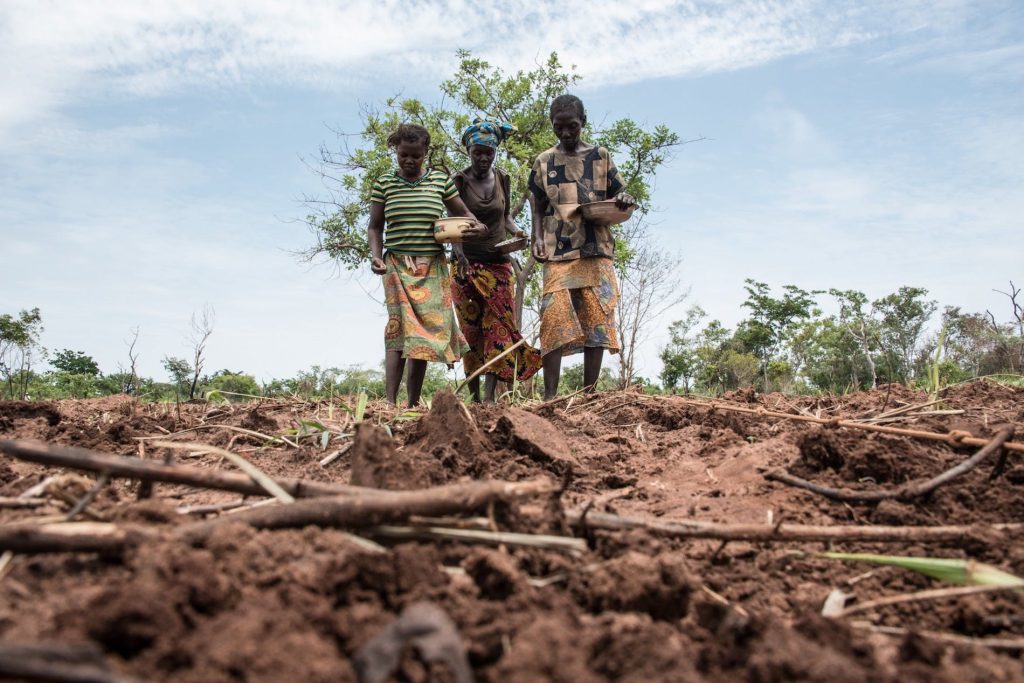Fragility presents a major threat to achieving the Sustainable Development Goals (SDGs), according to new research from the Organization for Economic Cooperation and Development (OECD). The OECD’s 2018 States of Fragility report, released last month, describes fragility as “an intricate beast, sometimes exposed, often lurking underneath, but always holding progress back.”
This year’s report provides new insights into how to understand, measure, and respond to fragility. It also includes analysis on 58 different fragile countries to better understand what fragility means for people, governments, and international organizations like the United Nations, and how new approaches can help to make more strategic and effective investments in fragile countries to enable progress on the SDGs.
Though each fragile context is unique, all fragile states suffer from a mismatch between the risks they face and their capacities for coping across political, security, economic, environmental, and social issues. This makes them especially vulnerable to shocks, whether an extreme weather event or stock market crash, and means that fragility represents a significant obstacle to sustainable development. According to the OECD, without concerted action fragility could be “the single biggest spoiler” to achieving the SDGs.
Here are some important takeaways from the OECD’s new research:
1. Fragility matters for everyone. Many of the world’s crises are caused by or exacerbated by fragility, from conflict to displacement to famines. In an increasingly interconnected world, political and security challenges transcend national boundaries, with impacts felt regionally and globally. Consequently, fragility does not only matter for people living in fragile states, it matters for everyone. Already almost a quarter of the world’s population – 1.8 billion people – lives in fragile contexts. Without concerted action, this could reach 2.3 billion by 2030, with implications reaching far beyond fragile countries.
2. Fragility drives conflict and reverses development. After decades of decline, the world has experienced a surge in violent conflict in recent years, with 2016 registering more conflicts globally than any point in the past three decades. Of the 15 most fragile countries identified in the OECD’s report, nine are experiencing conflict. Conflict carries a tremendous cost. Research by the Institute for Economics and Peace puts the price tag of violence at 12.4% of global gross domestic product. Conflict can reverse development and exacerbate other dimensions of fragility. Yet, in 2016, only 2% of Official Development Assistance in fragile contexts was directed to conflict prevention.<
The UN and World Bank increasingly recognize the need for a new approach to avert the tremendous cost of conflict – in human lives, development gains, and financial resources. The UN Secretary-General has made prevention central to the UN’s work, emphasizing early in his tenure that “conflict prevention is not merely a priority, but the priority.”
The UN and the World Bank are also working together to invest in conflict prevention through an updated strategic partnership framework and through the joint UN-World Bank Pathways for Peace study released earlier this year, which identifies more effective approaches for preventing conflict. The World Bank also recently rolled out its Global Crisis Risk Platform, designed to better position its work to prevent crises, and is doubling the resources it allocates to fragile states over the next three years.
3. But fragility is more than conflict. Of the 27 countries that the OECD labels as ‘chronically fragile,’ more than two-thirds have not experienced conflict in the last 10 years. Although some are still coping with the long-lasting effects of conflict, many are struggling to manage other sources of risk. Recognizing the complexity of fragility, the OECD’s framework measures fragility along five dimensions: economic, environmental, political, security, and societal. These dimensions are related: an increase in one can increase risks along other dimensions. At the same time, progress in one area does not necessarily lead to resilience. For instance, although stalled economic growth can exacerbate fragility, a country cannot depend on poverty reduction alone to reduce its exposure to risks. Indeed, more than half of the countries included in the OECD’s report are classified as middle income.
4. Fragile countries are already furthest behind in achieving the SDGs.Despite important progress made in advancing the SDGs in fragile countries, these states are already lagging non-fragile states in delivering on the global goals. Indeed, in analysis of 157 countries on SDG progress, fragile countries are consistently found in the bottom third, with extremely fragile countries clustered in the bottom three slots.<
The gap between the number of people living in extreme poverty in fragile and non-fragile contexts is growing. The OECD estimates that the proportion of people living in extreme poverty is anticipated to increase in 40 of 58 fragile contexts by 2030. By 2030, more than 80% of the world’s poorest people could be concentrated in fragile states, with more than half of those in just five countries. This means that delivering on the SDGs will require strategic and ambitious support for individuals in fragile contexts to ensure they are not left behind.
5. Climate change exacerbates fragility. Although the OECD measures environmental fragility as a distinct dimension in its framework, climate change is also driving fragility across all other dimensions. Extreme weather, agricultural uncertainty, and food insecurity all present additional risks that can be particularly challenging for already vulnerable communities. These trends put lives at risk. In 2016, climate change, together with conflict, drove an increase in world hunger after decades of progress in reducing the number of undernourished people in the world.
Although the challenge may be daunting, States of Fragility also issues a call to action to raise ambition and work together more effectively. In it, OECD members commit to step up to reduce fragility as an obstacle to achieving the SDGs and to “never lose sight of the end goal of delivering hope and better lives for all people living in fragile contexts.”

